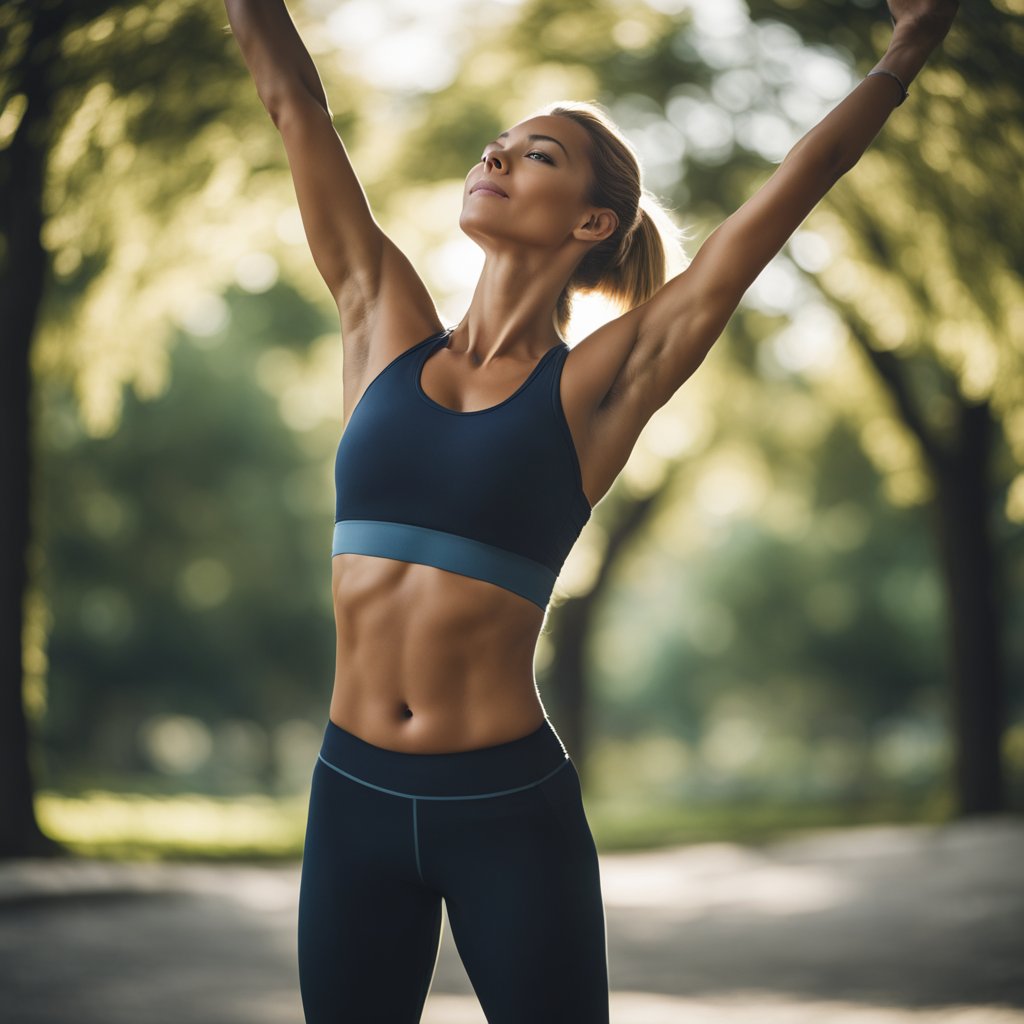Yoga has long been recognized for its ability to promote flexibility and relaxation, but its potential for building strength is often overlooked. Practicing yoga regularly can significantly enhance muscular strength, stability, and overall physical fitness. This ancient discipline offers a holistic approach to strength training, engaging both body and mind.

Yoga for strength combines traditional asanas with targeted exercises to build muscle, improve endurance, and increase power. Unlike conventional weightlifting, yoga uses bodyweight resistance to challenge muscles in unique ways. This approach not only develops physical strength but also enhances balance, coordination, and body awareness.
Incorporating strength-focused yoga into your routine can lead to improved posture, reduced risk of injury, and increased functional fitness for daily activities. As practitioners progress, they often experience a boost in confidence and mental resilience, complementing the physical benefits of their practice.
Key Takeaways
- Yoga builds strength through bodyweight resistance and targeted asanas
- Regular practice enhances muscular strength, stability, and overall fitness
- Strength-focused yoga improves posture, reduces injury risk, and boosts confidence
Understanding Yoga and Strength
Yoga and strength training complement each other to build a balanced fitness routine. Combining these practices enhances physical and mental fortitude while promoting overall well-being.
The Philosophy of Yoga and Strength
Yoga integrates physical postures, breath control, and meditation to unite mind, body, and spirit. This holistic approach aligns with strength training principles, emphasizing the mind-muscle connection.
Yoga’s focus on proper alignment and body awareness translates to improved form in strength exercises. This synergy reduces injury risk and maximizes muscle engagement.
The yogic concept of tapas, or disciplined effort, parallels the dedication required in strength training. Both practices cultivate mental resilience and physical endurance.
Benefits of Strength Training Through Yoga
Yoga builds strength using body weight resistance, particularly in the core, arms, and legs. Holding challenging poses develops isometric strength and stability.
Regular practice increases bone density, crucial for long-term health. Weight-bearing poses like Plank and Warrior series stimulate bone growth.
Yoga enhances muscular endurance and stamina. Flowing sequences and longer holds improve cardiovascular fitness alongside strength gains.
Dynamic yoga styles, such as Ashtanga or Power Yoga, offer intensity comparable to traditional strength workouts. These practices build lean muscle mass and boost metabolism.
Yoga’s emphasis on breath control supports efficient oxygen utilization during strength training. This improves performance and recovery in all physical activities.
Essential Asanas for Building Strength
Yoga offers powerful poses to enhance strength throughout the body. These asanas target key muscle groups and promote overall stability and power when practiced regularly.
Foundation Poses for Core and Stability
Plank pose forms the basis of many strength-building sequences. Hold the body in a straight line from head to heels, engaging the core and arms. For added challenge, try side plank variations.
Chaturanga, or low plank, builds upper body and core strength. Lower from plank with elbows close to the body, stopping when upper arms are parallel to the floor.
Tree pose improves balance and leg strength. Stand on one leg, placing the other foot on the inner thigh or calf. Engage the standing leg and core to maintain stability.
Dynamic Asanas for Arms and Shoulders
Warrior I (Virabhadrasana I) strengthens arms, shoulders, and legs. Step one foot back, bend the front knee, and raise arms overhead. Hold the pose, keeping the torso upright.
Warrior II (Virabhadrasana II) targets similar muscle groups. Turn the back foot parallel to the mat’s short edge. Extend arms out to the sides, gazing over the front hand.
For arm strength, practice flowing between plank, chaturanga, and upward-facing dog poses. This sequence builds endurance in the shoulders, chest, and triceps.
Leg-Strengthening Sequences
Chair pose targets the quads, glutes, and calves. Stand with feet together, bend the knees, and lower the hips as if sitting back into a chair. Keep the chest lifted and arms raised.
Warrior III challenges balance and strengthens the entire posterior chain. From standing, hinge forward at the hips, lifting one leg behind you. Extend arms forward or along the sides.
Practice lunges to build leg strength. Step one foot forward, lowering the back knee toward the floor. Keep the front knee aligned over the ankle. Alternate sides for a full leg workout.
Incorporating Props and Modifications
Props and modifications can enhance strength-building in yoga practices. They allow practitioners to deepen poses, increase resistance, and adapt routines to individual needs and abilities.
Using Weights In Your Yoga Practices
Adding weights to yoga routines can significantly boost strength gains. Light dumbbells or wrist weights can be incorporated into standing poses like Warrior II or Chair Pose. This increases muscle engagement and resistance.
For arm balances, weighted sandbags placed on the back can challenge core strength. Start with 1-2 pound weights and gradually increase as strength improves.
Yoga with weights combines traditional asanas with strength training principles. It’s essential to maintain proper form and alignment while using weights to prevent injury.
Props to Enhance Muscle Engagement
Blocks, straps, and resistance bands are valuable tools for increasing muscle activation in yoga poses. Blocks can be used to elevate the hands in lunges, engaging the legs more deeply.
Straps assist in maintaining proper alignment in seated forward folds, allowing for a stronger stretch in the hamstrings. Resistance bands wrapped around the thighs during Bridge Pose activate the glutes and inner thighs more intensely.
A yoga teacher may suggest using a wall for support in arm balances, helping to build strength gradually.
Modifications for Different Skill Levels
Modifying poses allows practitioners of all levels to benefit from strength-building yoga practices. Beginners can use chairs for support in standing poses or practice kneeling versions of arm balances.
Intermediate yogis might focus on holding poses for longer durations or adding small pulses to increase muscle engagement. Advanced practitioners can explore more challenging variations of poses, such as one-legged versions or transitioning between difficult postures.
It’s important to listen to your body and respect its limits when attempting modifications. Progress should be gradual and consistent to avoid strain or injury.
Pranayama and Focus Techniques
Pranayama and mental focus techniques enhance strength training by improving breath control and concentration. These practices optimize physical performance and mental resilience during yoga sessions.
Breathing for Enhanced Strength Training
Pranayama, the art of yogic breathing, plays a crucial role in strength-building yoga practices. Controlled breathing increases oxygen flow to muscles, enhancing endurance and power.
The Ujjayi breath, often used in yoga, involves inhaling and exhaling through the nose while constricting the throat slightly. This technique helps maintain stability during challenging poses.
Kapalabhati, or “skull-shining breath,” consists of short, forceful exhales followed by passive inhales. It energizes the body and sharpens focus for strength-based exercises.
Practitioners can synchronize their breath with movements to maximize effort and maintain proper form. This coordination improves overall performance and reduces the risk of injury.
Mental Focus and Its Role in Strength Building
Mental focus is essential for developing strength through yoga. Concentration techniques help practitioners maintain proper alignment and engage the right muscle groups.
Drishti, or focused gaze, is a powerful tool for balance and stability in standing poses. By fixing the eyes on a single point, yogis can maintain concentration and reduce distractions.
Visualization techniques can enhance strength-building efforts. Imagining muscles engaging and energy flowing through the body can lead to improved physical performance.
Mindfulness practices help manage stress and fatigue during challenging sequences. By staying present and aware, practitioners can push their limits safely and effectively.
Regular meditation can boost mental resilience, allowing yogis to maintain focus during long holds and intense strength-building sessions.
Advanced Strength-Related Asanas and Sequences
Advanced yoga poses build significant strength through challenging balances and inversions. These asanas target multiple muscle groups simultaneously while improving stability and body awareness.
Mastering Inversion Poses for Upper Body Strength
Handstands develop tremendous upper body and core strength. Begin by practicing against a wall for support. Focus on aligning the shoulders over the wrists and engaging the core.
Forearm plank builds endurance in the arms, shoulders, and upper back. Hold for 30-60 seconds, keeping the body in a straight line. Progress to side plank variations to target the obliques.
For a dynamic inversion, try transitioning from crow pose to handstand. Start in crow, then slowly shift your weight forward, extending the legs upward. This builds arm and shoulder strength while improving balance.
Challenges with Arm Balances
Crow pose strengthens the arms, wrists, and core. Place the knees on the backs of the upper arms, lean forward, and lift the feet off the ground. Hold for 5-10 breaths.
Eight-angle pose intensifies the arm balance challenge. From seated, wrap one leg around the arm and lift both legs off the ground. This pose engages the entire upper body and core.
Firefly pose targets the arms, shoulders, and hamstrings. Squat low, place the hands on the ground, and lift the hips to balance on straight arms with legs extended.
Deep Stretching for Muscle Tone and Recovery
Wheel pose opens the chest and strengthens the back muscles. Press into the hands and feet to lift the hips and chest off the ground, creating an arch shape.
King pigeon pose deeply stretches the hips, thighs, and chest. From a low lunge, slide the front leg forward and lean back, reaching for the back foot.
Standing splits intensely stretch and strengthen the hamstrings. From standing forward fold, lift one leg toward the ceiling while keeping both legs straight.
Practice Routines and Long-term Advancement

Regular yoga practice builds strength and flexibility over time. Consistency and proper progression are key to reaping the full benefits of yoga for strength training.
Developing a Consistent Yoga Routine
Start with 2-3 yoga sessions per week, each lasting 30-60 minutes. Choose a mix of strength-focused styles like Ashtanga, Power Yoga, and Vinyasa.
Schedule sessions at consistent times to establish a habit. Morning practices can energize the day, while evening sessions may aid relaxation.
Include a variety of poses:
- Standing poses: Warrior series, Chair pose
- Arm balances: Crow pose, Side Crow
- Inversions: Headstand, Shoulderstand
- Core work: Plank variations, Boat pose
Gradually increase session frequency and duration as strength improves.
Advancing Your Practice Safely Over Time
Progress slowly to avoid injury. Master foundational poses before attempting advanced variations.
Incorporate these strategies:
- Increase hold times for strength poses
- Add more challenging variations of familiar poses
- Introduce new, more complex poses gradually
Listen to your body and respect its limits. Rest when needed and avoid pushing through pain.
Attend workshops or seek guidance from experienced instructors to refine technique and learn proper alignment for advanced poses.
Track progress by noting improvements in strength, balance, and flexibility. This helps maintain motivation and identify areas for further development.

